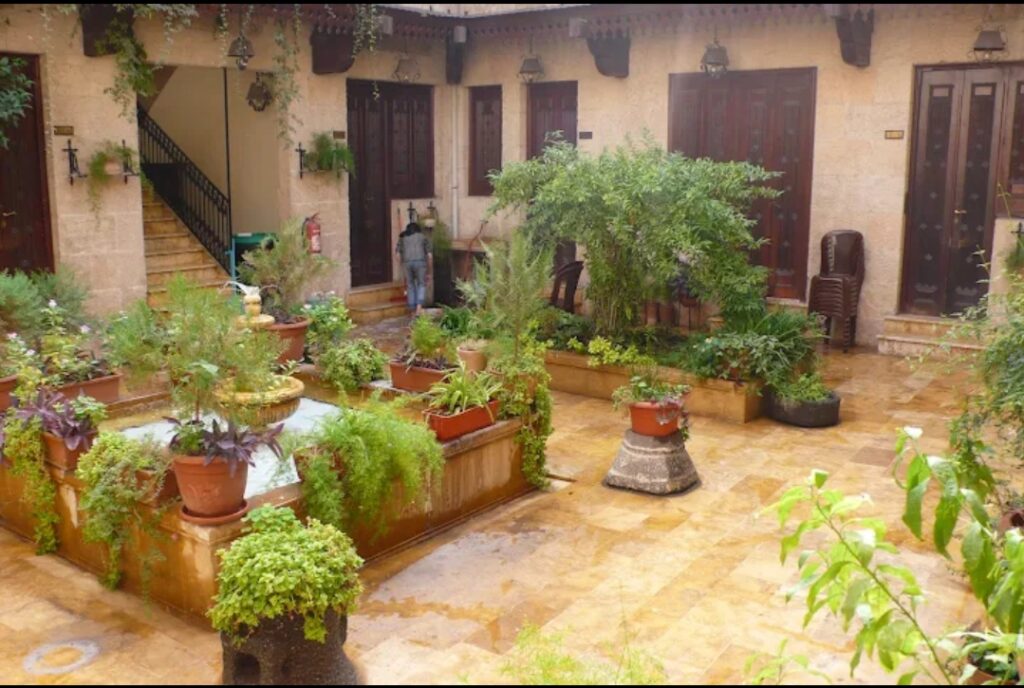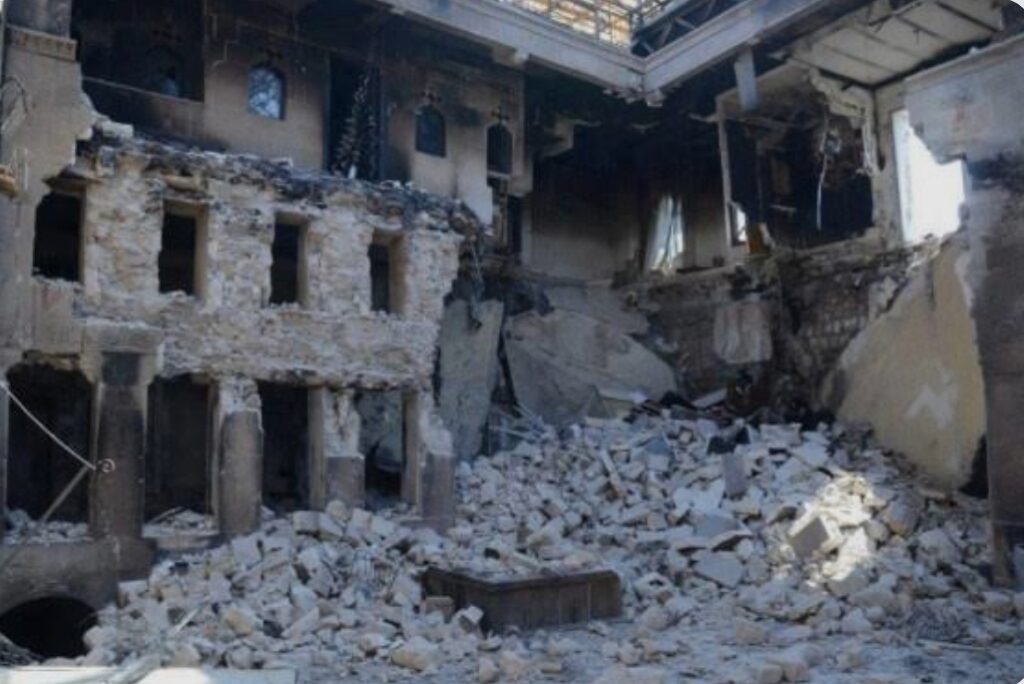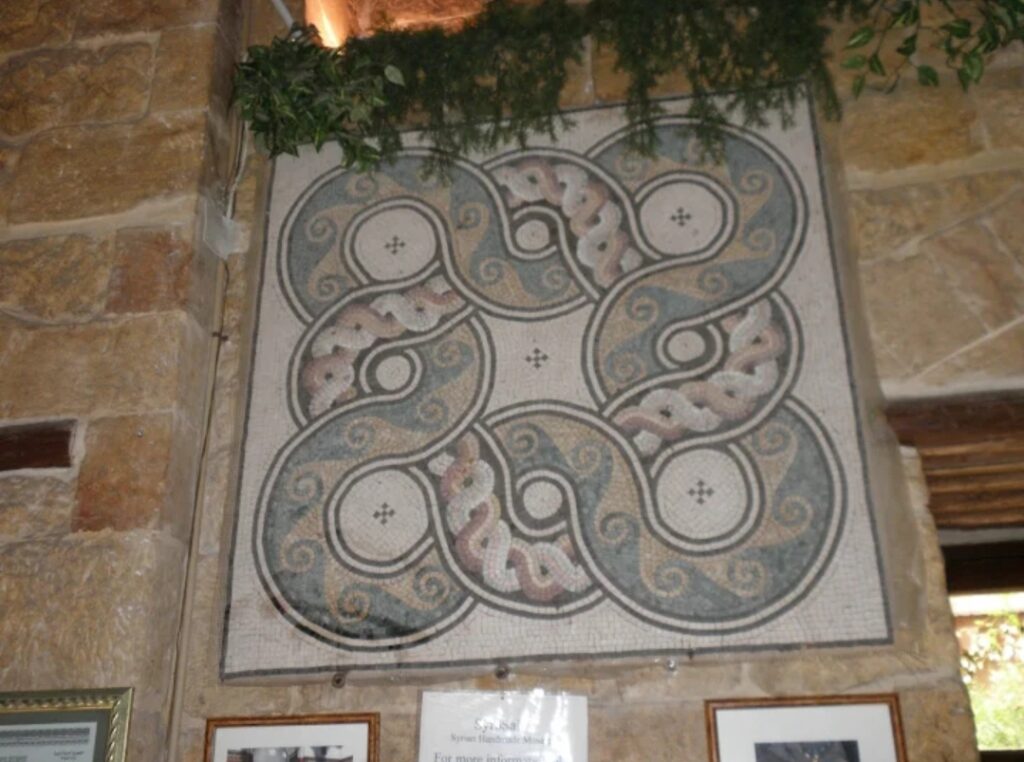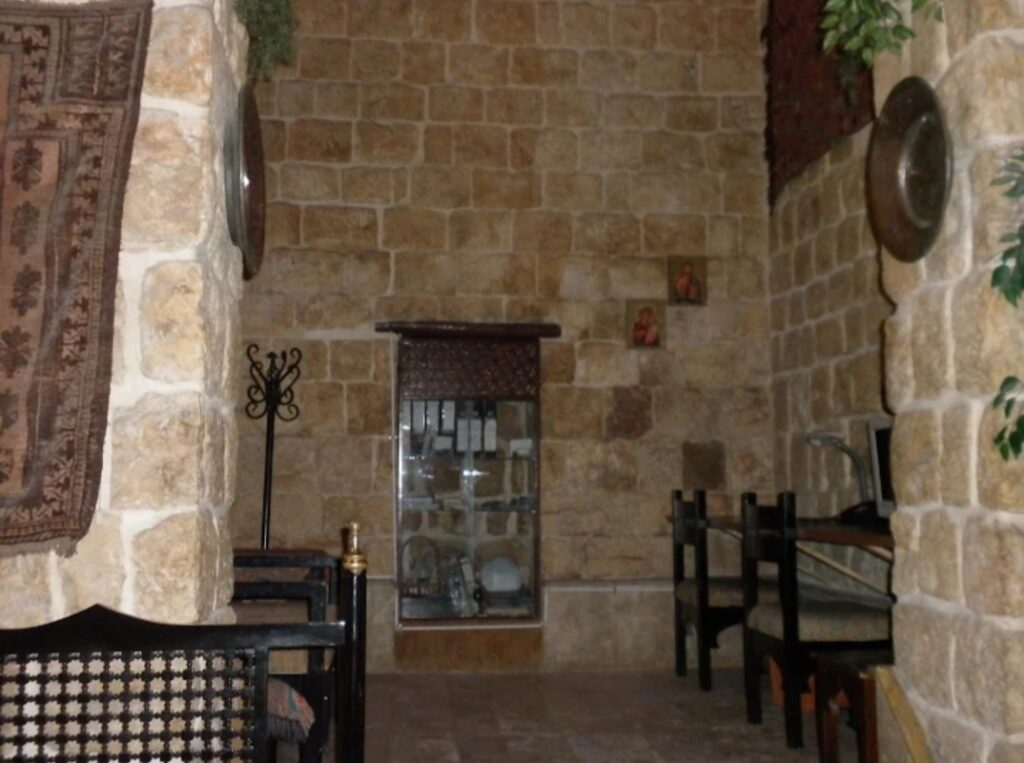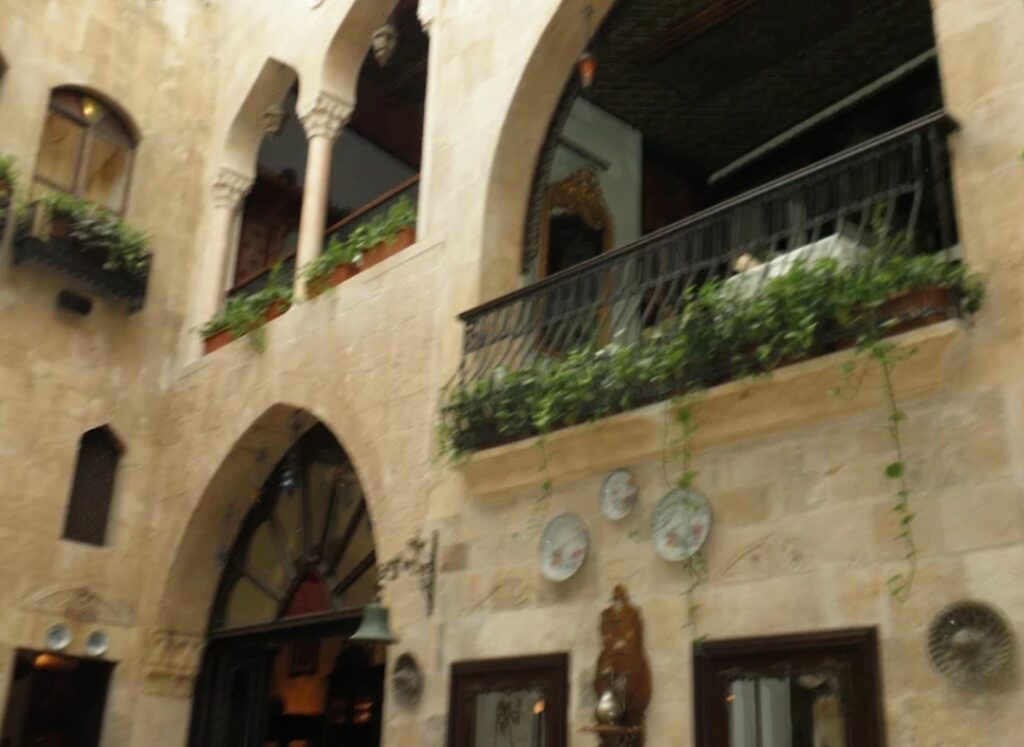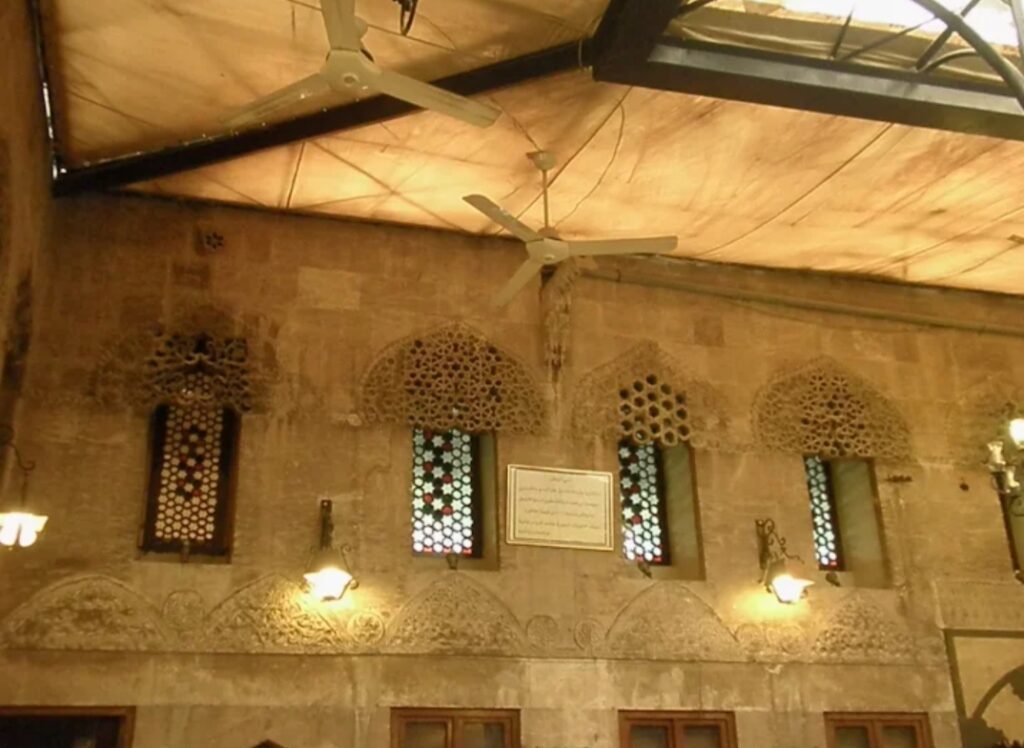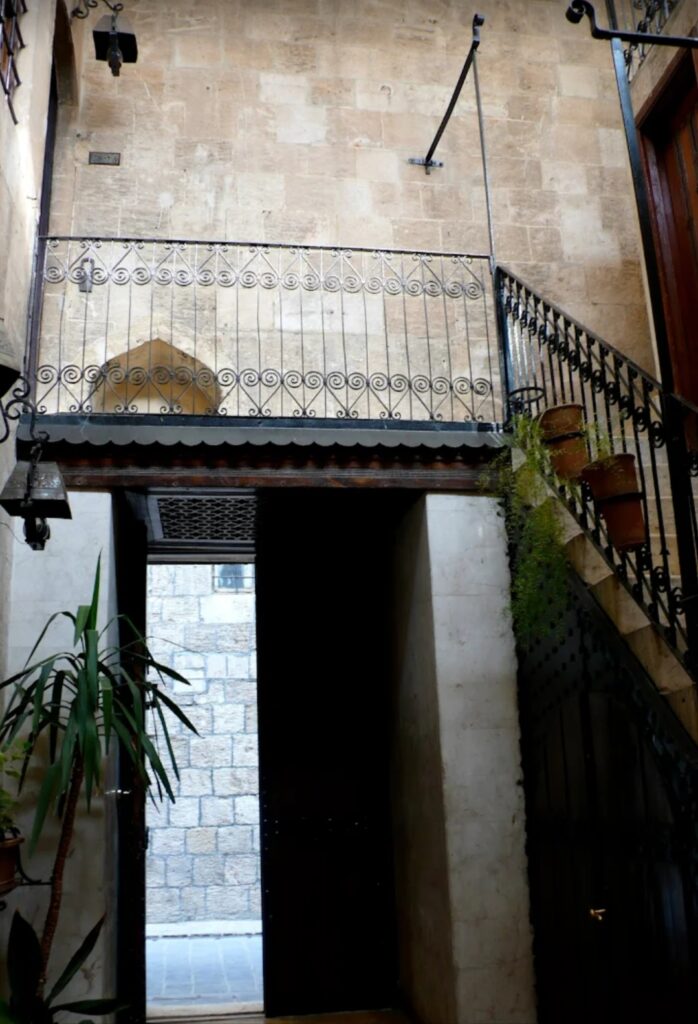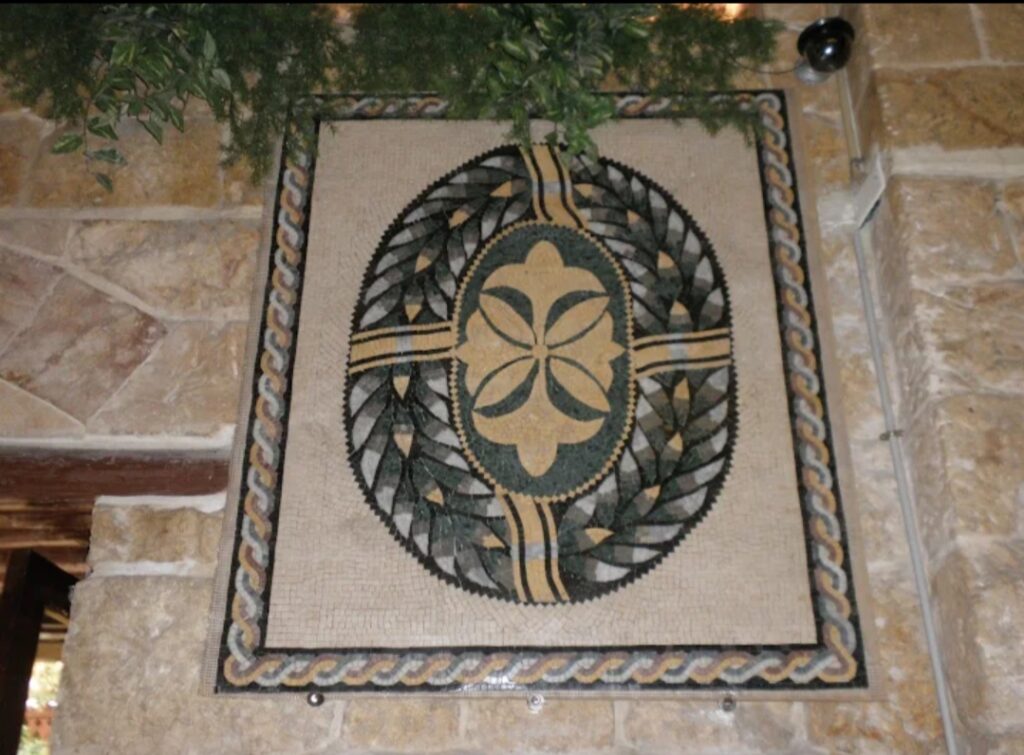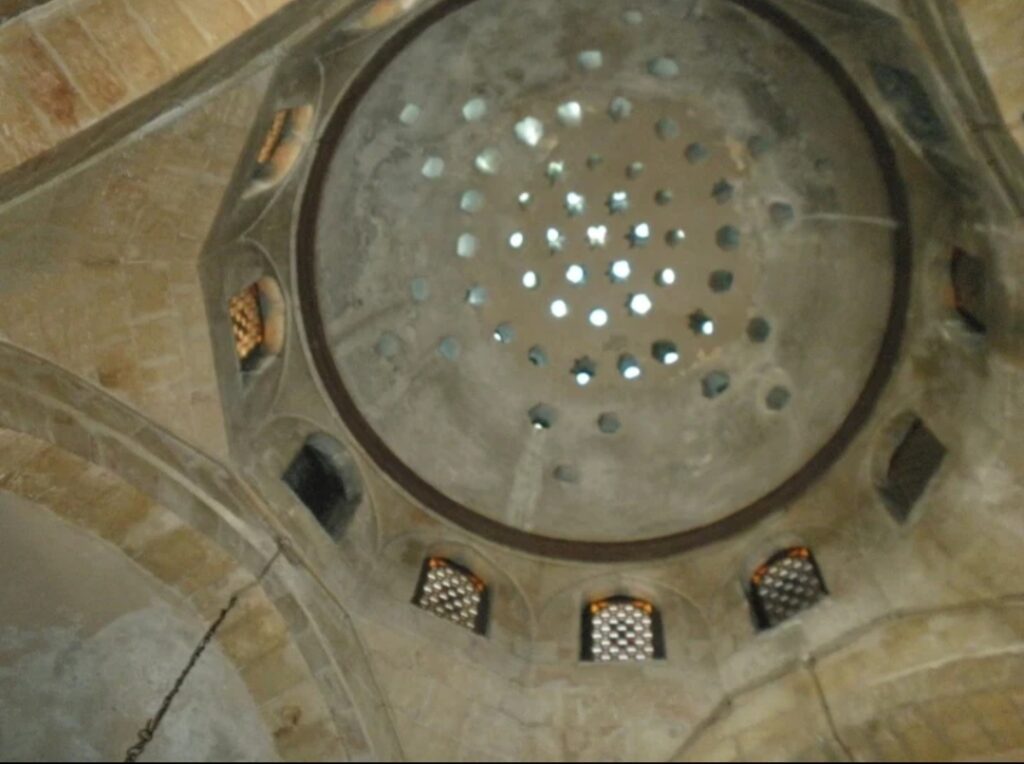Beit al-Wakeel is one of the architectural gems of Old Aleppo, representing an authentic model of affluent Arab houses from the Ottoman period. The house was built in the early 17th century—specifically in 1603 AD—as indicated by inscriptions carved into the wooden panels of the reception hall.
The house was originally owned by Issa bin Boutros and features a beautifully decorated wooden iwan inscribed with the Quranic verse Ayat al-Kursi, surrounded by exquisite floral motifs. The iwan is topped by a ceiling supported by sixteen intricately carved wooden columns, locally known as al-‘Arusa or al-‘Arabiyyeh, which support the beams and preserve the structural integrity of the space.
Over the centuries, Beit al-Wakeel’s function evolved: it served as a private residence, later became a home for the elderly, and subsequently an orphanage under the supervision of the Greek Orthodox community. In 1990, the house underwent extensive renovation and was transformed into a boutique hotel, featuring five rooms that overlook a marble fountain (bahra) and bitter orange trees laden with fruit, creating an atmosphere of serenity and beauty.
The hotel’s restaurant is renowned for offering authentic local dishes such as Fattet al-Maqadem—a traditional delicacy of Aleppo—offering guests the chance to savor the rich flavors of Aleppine spices. This culinary experience immerses visitors in Aleppo’s historic charm and deep-rooted culinary heritage.


